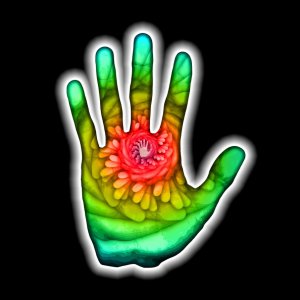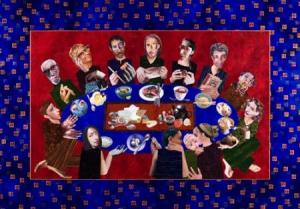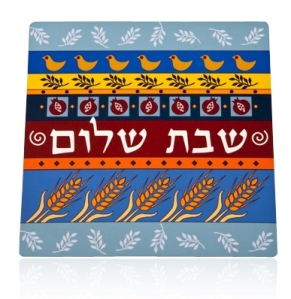Advent 3A
December 15, 2013
Isaiah 35:1-10
Psalm 146:4-9
Matthew 11:2-11
[Preached at All Saints Church Episcopal, Sunderland, MD, December 15, 2013]
 Welcome to Week Three of Advent. This Sunday is traditionally known as Gaudete – or “Joyful” – Sunday, marked by a pink candle on the Advent wreath. In the Middle Ages, this was a time during the solemn, introspective Advent season where the faithful were encouraged to look at the other side of the Advent coin and rejoice at the anticipated coming of Christ.
Welcome to Week Three of Advent. This Sunday is traditionally known as Gaudete – or “Joyful” – Sunday, marked by a pink candle on the Advent wreath. In the Middle Ages, this was a time during the solemn, introspective Advent season where the faithful were encouraged to look at the other side of the Advent coin and rejoice at the anticipated coming of Christ.
The words of the prophet Isaiah today bubble over with joy, conveying the feelings of the Judean captives at the end of their long captivity in Babylon, as they returned to their homeland.
 “The wilderness and the dry land shall be glad, the desert shall rejoice and blossom; like the crocus it shall blossom abundantly, and rejoice with joy and singing”
“The wilderness and the dry land shall be glad, the desert shall rejoice and blossom; like the crocus it shall blossom abundantly, and rejoice with joy and singing”
The prophet, anticipating this homecoming, envisions not just a transformation of the captives as they are liberated, but a transformation of the very land itself as God’s people set back to work reclaiming it and cultivating it. You see, for the ancient Jews, land was more than just a patch of real estate. Ellen F. David, author of Scripture, Culture and Agriculture (2008), says that:
The ideal shared by most biblical writers, in Torah, the historical books, and the Prophets, is that arable land is covenanted by God to the people Israel … The land was the tangible evidence of the covenant.
 As a result, being restored to the land was more than simply a homecoming – it was being restored to right relationship – or holiness – with God through the land. It was a restoration of the captives’ fundamental humanity, as members of a treasured, covenanted community, living out their lives in harmony with God’s good creation. It was the deep, joyful healing of a community traumatized by war and captivity.
As a result, being restored to the land was more than simply a homecoming – it was being restored to right relationship – or holiness – with God through the land. It was a restoration of the captives’ fundamental humanity, as members of a treasured, covenanted community, living out their lives in harmony with God’s good creation. It was the deep, joyful healing of a community traumatized by war and captivity.
 This sacred, healing relationship between God, people and the land is also noted by Fred Bahnson in his work Soil and Sacrament (2013), a study of several faith-based community gardens around the United States. Bahnson comments that “The garden is our oldest metaphor. In Genesis God creates Adam [or Adama] from the adaMAH [which is Hebrew for “soil”], and tells him to ‘till and keep’ it, the fertile soil on which all life depends”. The Genesis story sees our fundamental humanity as bound up with the earth. Bahnson also observes that the Hebrew concept of Shalom (translated as “peace”) means “a right relation not only with God and people but with the adamah.”
This sacred, healing relationship between God, people and the land is also noted by Fred Bahnson in his work Soil and Sacrament (2013), a study of several faith-based community gardens around the United States. Bahnson comments that “The garden is our oldest metaphor. In Genesis God creates Adam [or Adama] from the adaMAH [which is Hebrew for “soil”], and tells him to ‘till and keep’ it, the fertile soil on which all life depends”. The Genesis story sees our fundamental humanity as bound up with the earth. Bahnson also observes that the Hebrew concept of Shalom (translated as “peace”) means “a right relation not only with God and people but with the adamah.”
Susan Sides is the garden manager for the Lord’s Acre, a church-founded community garden in North Carolina. When she talks about her work for the Lord’s Acre, she makes it evident that she is not just talking about gardening, or even feeding people from the garden. She is talking about wholeness and healing on a very deep level:
We grow food for the food pantry, but our work here is really about finding ways to make love visible. We begin each day by asking “What does it take for this person, this plant, this community to flourish?” And not just individual plants or people, but what does it take for them to flourish in relationship? (Bahnson, ibid.)
The Lord’s Acre produces over 8 tons of food per year for local charities on its half-acre plot. But for Susan, getting back to the garden means getting back to one’s humanity – as a citizen of the earth, as a member of the community and as a child of God.
In our lives today, many of us are starved (or “food insecure”) both literally and spiritually. And our starvation in turn makes us ill. According to the Department of Agriculture, nearly 10% of the U.S. population (roughly 30 million people) lives in “food deserts” – low-income areas more than a mile from a supermarket with fresh, healthy produce (“Access to Affordable and Nutritious Food: Measuring and Understanding Food Deserts and their Consequences – A Report to Congress”, 2009). This doesn’t include people in “food mirages” who live close by fresh food, but who cannot afford it due to unemployment or low incomes. These people are more likely to die from cardiovascular diseases than the general population as they rely on cheap, nutrient-poor, processed food from convenience stores. We are increasingly separated from our food sources, and – in an asphalt-covered world – we are also alienated from the good earth that produces it (and produces us with it). Pat Stone, founder of the Lord’s Acre, says “We’ve lost the ability to grow fresh food, prepare fresh food, and preserve fresh food. It’s a simple life skill that’s been part of humanity since Day One.” Fred Bahnson also comments, “In the ways we grow our food and in the food we choose to eat, we have largely lost our connection with the adamah; we have failed to live in the garden” (Bahnson, ibid.)
Sow Much Good (spelled S-O-W) is another North Carolina community garden that was the product of Robin Emmons, an African American woman who left her corporate job to care and advocate for her homeless brother, who suffers from schizophrenia. In the process of doing so, she noticed that her brother and many other homeless people suffered from diabetes and other chronic illnesses due to a poor diet (CNN, “Creating an Oasis in a Southern ‘Food Desert’”, 10/21/13). In a fit of inspiration, Emmons says ““I called up 50 of my closest friends, dug up my backyard, and planted food on every square inch of it, producing about 3,000 lbs. of food in the first year for distribution to low-income neighborhoods” (TEDxCharlotte – live talk) Sow Much Good now farms 9 acres of land, with the help of 200 volunteers.
The Hebrew Bible reading and the Gospel reading for this week are linked by references to healing miracles. In the reading from Isaiah, healing is a sign that the Kingdom of God has been miraculously restored to the freed captives: “Then the eyes of the blind shall be opened, and the ears of the deaf unstopped; then the lame shall leap like a deer, and the tongue of the speechless sing for joy” (Isaiah 35:5-6). In the Gospel reading from Matthew, miraculous healings are used by Jesus to demonstrate to the followers of John the Baptist – who were wondering if Jesus was the Messsianic leader of Israel – that the Kingdom of God was already being inaugurated: “Go and tell John what you hear and see: the blind receive their sight, the lame walk, the lepers are cleansed, the deaf hear, the dead are raised, and the poor have good news brought to them” (Matt 11:4-5).
It is important to note, though, that these healings are not just a matter of individuals being suddenly cured of what ails them. Curing is not healing. The healing of the freed Babylonian captives took place in the context of their reunion with the land, covenanted by God, which fed them, healed them and linked them back to God. The healing of Matthew’s community was taking place in the early house-churches where the Eucharist was a literal meal – the bounty of God’s good earth (the adamah) – shared at the welcome table with the poor and the outcast. People were fed in body and spirit, and they were gradually healed in body and spirit, in the arms of a loving community. Also note that community and communion are from the same Latin root meaning “as one”. We are healed when we come together as a community, as members of the one body of Christ.
Robin Emmons shares that her work with Sow Much Good has a great deal to do with healing:
It is absolutely our individual choices that will change our lives, our communities and our world … We can all make the decision to move more consciously through the world, more awake … It’s no secret that our community and our world is in need of healing. There are issues of hunger, poverty, homelessness, inequities in our food system and many, many other injustices. There is no shortage of opportunity for us to awaken to a life that is in service to humanity.
In her work creating Sow Much Good, Robin Emmons was no longer blind to the struggles of the poor around her. She was no longer deaf to their needs and their stories, as she was in her “scripted” corporate life. And she was no longer paralyzed by feelings of hopelessness at the enormity of the world’s problems. In working God’s good earth (the adamah), and feeding God’s people, the community healer was also healed.
Fred Bahnson relates of his experience at the community garden Anathoth: “I had experienced profound moments when people and the land coexisted in blessed armistice, times free of struggle, and in those moments it seemed as if God’s glory had come to dwell in the land.” I think this is what Christ meant when he said “Go and tell John what you hear and see”.
So what do the scriptures on this “joyful Sunday” have to tell us as we await the coming of Christ? While we are not all called to lives as farmers or master gardeners, maybe we can (as Robin Emmons says) “move more consciously through the world” as we tread on the adamah. Maybe this Advent season we can try to get out and touch the soil that gives us life more often and give our support to those who are healing the earth and their communities. Maybe we can take part in sharing the products of that soil with those greatest in need around us by – for example – volunteering at a food bank, helping out at the Outreach Breakfast … or maybe even tilling that abandoned playground out back to create our own community garden (just a thought). And maybe we can come to see ourselves, once again, as a people covenanted with God and each other to heal the earth that created us – and ourselves with it. As we come to the altar for communion today, let us celebrate the joyful gift of Christ’s body and blood – the bread and wine from God’s good earth – and renew ourselves as vital members of Christ’s body to heal those around us.






How can anyone add to such a well told reality as to the meaning of the written words called scripture? It’s so well said I hate even to add the little I must by my obligation to YHWH.
Those examples, presented by Sister Rose, are showing how, once Monsanto is banished from attempting to destroy man by modifying our foods, it will be when the second advent actually arrives and feed hungry man the earth over his wisdom as well as how the people returns to producing foods in their pure state. If you pray during this advent season, pray that he comes soon because the entire earth is, figuratively, in tears from our behavior toward each other and it.
❤